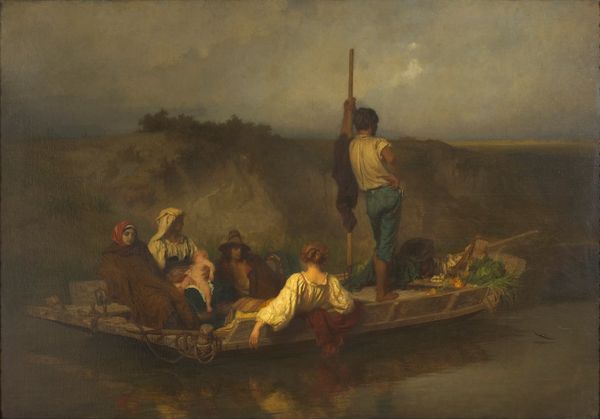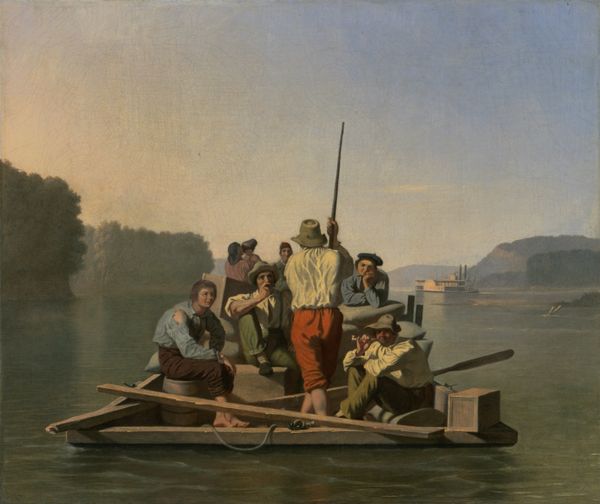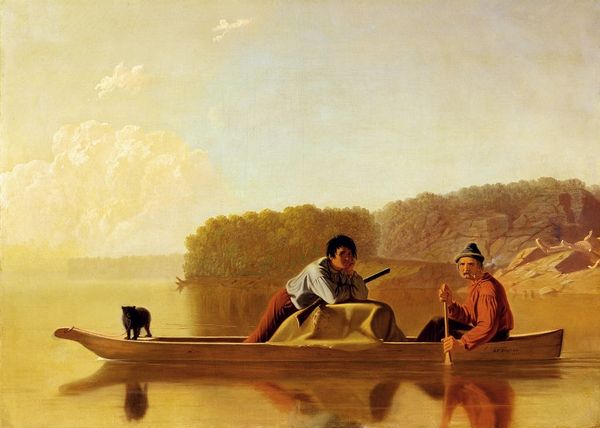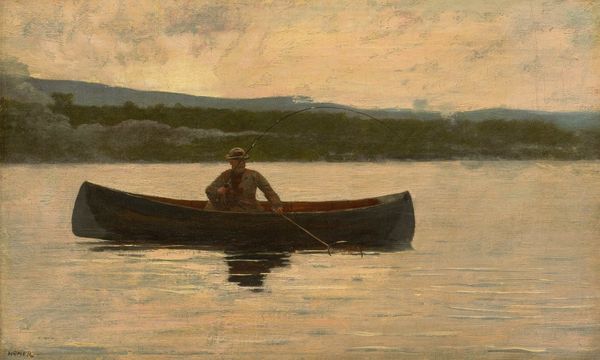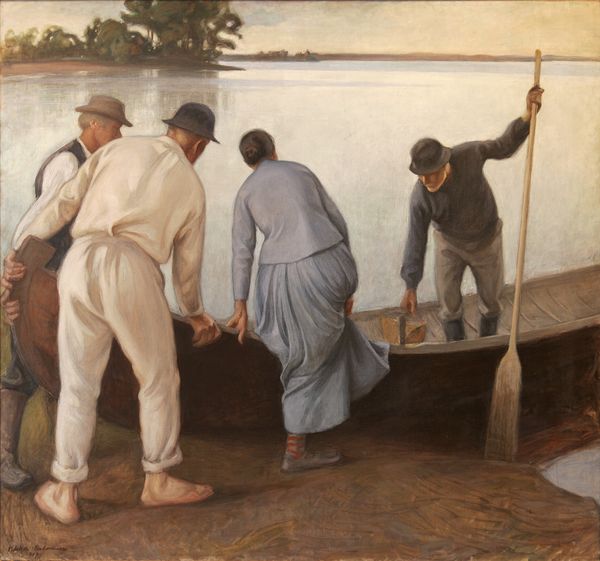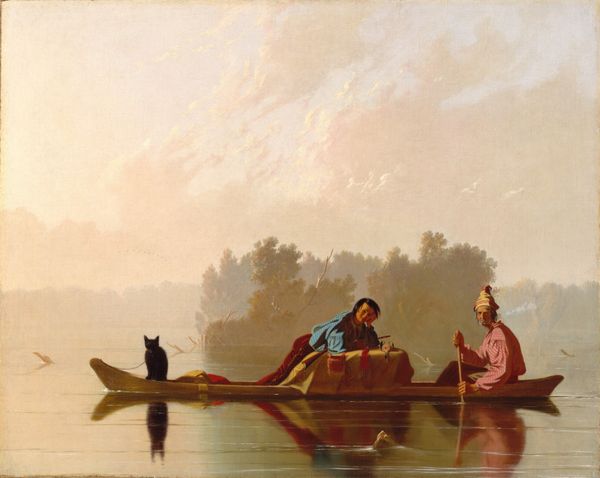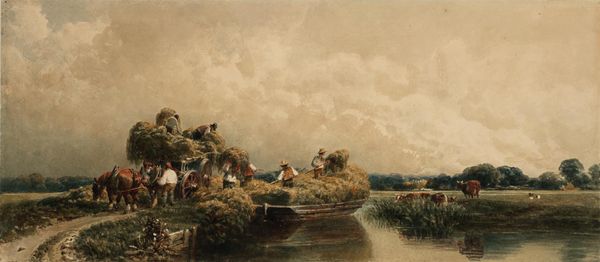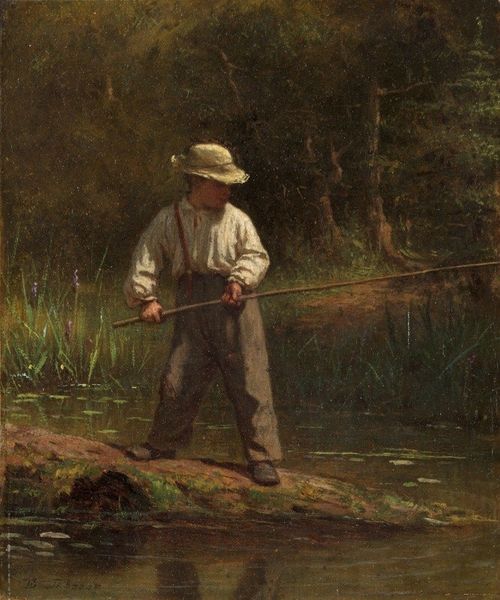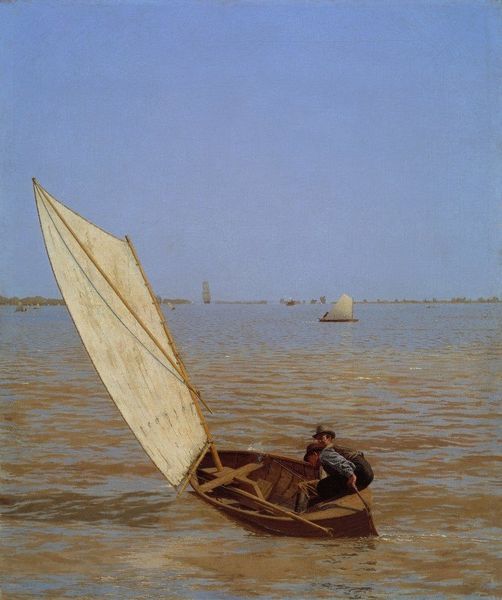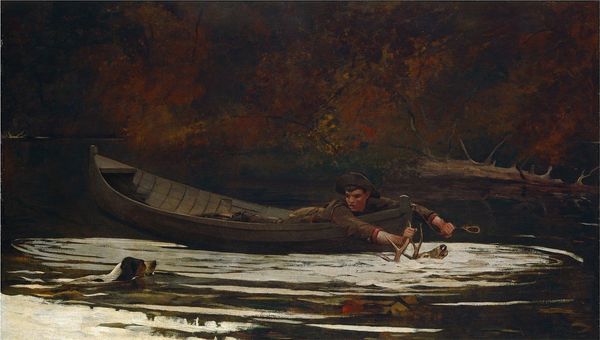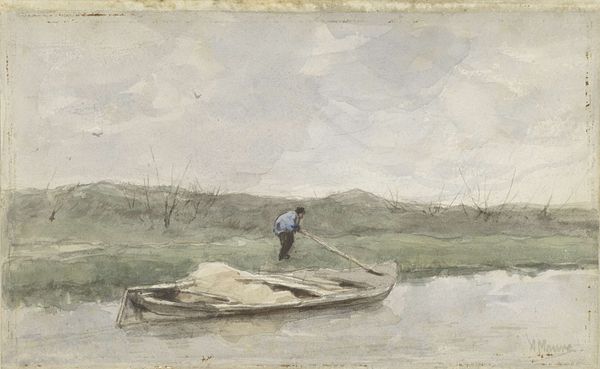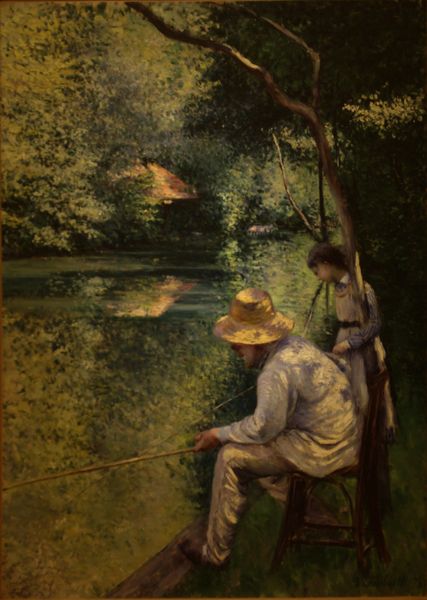
painting, oil-paint
#
portrait
#
gouache
#
figurative
#
painting
#
oil-paint
#
oil painting
#
genre-painting
#
history-painting
#
realism
Copyright: Public Domain: Artvee
Curator: I am drawn into the water; its gentle surface ripple belies so many layers of life beneath and around the boat depicted in this oil painting. What catches your eye about Thomas Eakins' "Rail Shooting on the Delaware," from 1876? Editor: I immediately feel this slightly melancholic mood. The muted greens and grays... like the sky’s holding its breath before a storm, or after, actually. It's as if the world has been muffled and waiting. The rifle points the stillness. Curator: It's a quiet slice of Americana. Eakins sought to capture the everyday experiences, not just some idealized version of the world. He presented subjects engaging in sport, portraying labor and leisure intertwined, you know? Eakins certainly wanted to evoke realism in every scene he depicted. Editor: And that ambition towards realism plays a role, I believe, in some of the tension one feels examining this piece. Considering when this painting was made, and the racial dynamics… what’s your interpretation of the relationship between the men in the boat? Curator: Precisely. Here is a representation that reflects American society, but doesn’t explicitly attempt to critique it. Eakins presented things how they were, yet he wasn’t afraid to present aspects that prompt conversations around race, class, labor, power. The one man guides the boat; the other hunts, focused intently. This, I think, demonstrates that he saw a multi-dimensional dynamic—even, dare I say, symbiosis. Editor: Hmm... the passivity of one figure contrasts strongly against the agency of the other. And yes, I see the symbiosis you point to; they both fulfill their roles in their joint effort. It's uncomfortable because of what their clothing—and the context—says about them and their world, but yet there's some connection in their cooperation. Curator: What I admire most is that it eschews romanticizing, revealing reality in all its beautiful mundanity. These were ordinary days—hunting excursions undertaken often, perhaps to put food on the table—captured with intention. Editor: Perhaps this painting's real brilliance lies in sparking contemplation – prompting us to wrestle with uncomfortable questions instead of offering easy answers. Curator: Yes, provoking a sort of empathy even in our contemporary context. It makes me consider those seemingly simple, yet incredibly intricate moments that we, ourselves, inhabit today. Editor: Precisely. In a way, this quiet painting becomes a mirror. I’ll not soon forget the water, though; that gorgeous, brooding ripple, reflecting all we might dare to ask it.
Comments
No comments
Be the first to comment and join the conversation on the ultimate creative platform.
